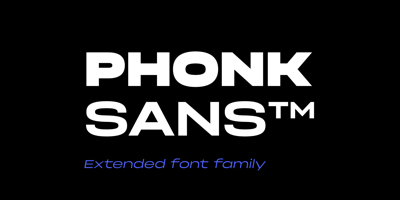Free Fonts Used by Top US Fortune 500 Companies
Free Fonts Used by Top US Fortune 500 Companies
The assumption that Fortune 500 companies exclusively use expensive, custom typography is one of the biggest myths in corporate design. In reality, many of America's largest and most successful companies strategically leverage free fonts to achieve their branding and communication goals while optimizing costs and maintaining design consistency across vast organizations.
This comprehensive analysis reveals the surprising truth about font usage among Fortune 500 companies, examining which free fonts power some of America's most valuable brands and why these cost-effective typography choices often outperform expensive alternatives. Understanding these patterns provides valuable insights for businesses of all sizes seeking professional typography solutions without premium price tags.
The Economics Behind Fortune 500 Font Choices
Fortune 500 companies make typography decisions based on complex factors that extend far beyond aesthetics. Cost efficiency, licensing simplicity, global compatibility, and performance optimization often outweigh the prestige of custom fonts, making free fonts an intelligent choice for large-scale operations.
Licensing Complexity and Cost Management
Large corporations operate across multiple divisions, geographical markets, and digital platforms, creating licensing challenges that can make premium fonts prohibitively expensive. A single custom font license for a Fortune 500 company might cost hundreds of thousands of dollars annually when factoring in global usage rights, digital distribution, and employee access across thousands of users.
Free fonts eliminate these complications entirely. Companies can deploy fonts like Open Sans or Roboto across unlimited users, platforms, and geographical markets without ongoing licensing fees or compliance concerns. This simplicity proves invaluable for organizations managing complex global operations.
Performance and Technical Requirements
Fortune 500 companies prioritize website performance and user experience metrics that directly impact revenue. Free fonts from sources like Google Fonts often provide superior technical performance compared to premium alternatives, with optimized file compression, global CDN distribution, and extensive browser compatibility testing.
Google Fonts, in particular, benefits from massive scale optimization that individual foundries can't match. When millions of websites use the same font files, browser caching ensures faster loading times for end users – a technical advantage that premium fonts rarely provide.
Technology Sector: Leading the Free Font Revolution
Microsoft: Embracing Open Source Typography
Microsoft's strategic shift toward open-source technologies extends to typography choices throughout the organization. While the company maintains custom fonts like Segoe UI for core products, Microsoft increasingly uses free fonts for marketing materials, internal communications, and subsidiary brands.
The company's developer documentation and technical resources frequently employ Source Code Pro and other free fonts that align with the open-source communities Microsoft now actively supports. This approach reinforces Microsoft's cultural transformation while providing practical benefits for global content distribution.
Amazon: Efficiency Through Standardization
Amazon's vast ecosystem of services and marketplaces requires typography solutions that work across incredibly diverse contexts – from logistics labels to premium video content. The company strategically uses free fonts like Open Sans and Roboto for many applications where custom fonts would create unnecessary complexity.
Amazon's marketplace sellers, representing millions of businesses globally, benefit from typography guidelines that emphasize free fonts, ensuring consistent brand presentation without creating licensing barriers for smaller merchants. This approach supports Amazon's ecosystem growth while maintaining visual coherence.
Google: Practicing What They Preach
Google's commitment to open web standards naturally extends to typography choices. While the company maintains custom fonts like Product Sans for core branding, Google extensively uses fonts from their own Google Fonts library for marketing materials, documentation, and subsidiary communications.
This practice validates Google Fonts' quality and performance while demonstrating the company's commitment to web accessibility and open standards. Google's internal usage also drives continuous improvement in free font offerings, benefiting the entire web design community.
Financial Services: Trust Through Typography
JPMorgan Chase: Selective Free Font Integration
While JPMorgan Chase maintains custom fonts for primary branding, the company uses free fonts for extensive digital communications, internal documentation, and subsidiary brands. The bank's approach demonstrates how large financial institutions can balance brand consistency with operational efficiency.
Chase's mobile applications and online banking platforms benefit from free fonts' superior web performance, ensuring fast loading times that improve customer satisfaction and reduce abandonment rates. These performance benefits often outweigh the brand differentiation that custom fonts might provide.
Bank of America: Global Consistency Through Free Fonts
Bank of America's international operations require typography solutions that work across diverse markets and regulatory environments. Free fonts provide licensing simplicity that enables consistent global brand presentation without complex international font licensing negotiations.
The bank's extensive ATM network, digital signage, and customer communication materials often employ free fonts that ensure readability and accessibility compliance across all touchpoints while minimizing operational complexity.
Retail and Consumer Goods: Scale Optimization
Walmart: Accessibility and Performance
Walmart's commitment to accessibility and inclusive design drives typography choices that prioritize readability and performance over stylistic differentiation. The company uses free fonts extensively for e-commerce platforms, internal communications, and vendor materials.
Free fonts' superior accessibility features, including optimized screen reader compatibility and clear character differentiation, align with Walmart's goal of serving diverse customer populations. These fonts also provide the technical performance required for Walmart's high-traffic digital platforms.
Home Depot: Contractor-Friendly Typography
Home Depot's contractor and professional customer base requires clear, readable communications across diverse contexts – from mobile apps used in bright lighting conditions to printed materials in dusty work environments. Free fonts provide the robust readability required for these demanding applications.
The company's extensive supplier network benefits from typography guidelines that emphasize free fonts, ensuring consistent brand presentation across thousands of vendor materials without creating licensing barriers for smaller suppliers.
Healthcare and Pharmaceuticals: Clarity and Compliance
CVS Health: Patient-Centered Typography
CVS Health's focus on patient accessibility drives typography choices that prioritize clarity and readability across all customer touchpoints. Free fonts provide the clear character differentiation and excellent screen readability required for healthcare communications.
The company's digital health platforms use free fonts optimized for extended reading and accessibility compliance, ensuring that critical health information remains accessible to users with diverse abilities and technical setups.
Johnson & Johnson: Global Health Communication
Johnson & Johnson's global healthcare operations require typography that works across diverse markets, languages, and regulatory environments. Free fonts provide the comprehensive language support and licensing simplicity required for international healthcare communications.
The company's extensive product labeling and patient education materials benefit from free fonts' proven readability and accessibility features, ensuring critical health information reaches all intended audiences effectively.
Manufacturing and Industrial: Functional Typography
General Electric: Industrial Efficiency
GE's industrial operations require typography that performs reliably across harsh environments and diverse applications – from control panel displays to safety documentation. Free fonts provide the robust technical specifications required for industrial applications.
The company's global manufacturing operations benefit from free fonts' licensing simplicity, enabling consistent typography deployment across international facilities without complex licensing negotiations or compliance concerns.
Caterpillar: Heavy-Duty Communications
Caterpillar's construction and mining equipment requires clear, durable typography for operator interfaces, safety materials, and technical documentation. Free fonts provide the proven readability and technical reliability required for these demanding applications.
The company's dealer network and international operations benefit from typography solutions that work consistently across diverse markets and applications without licensing complications that could impede global business operations.
Strategic Advantages of Free Font Adoption
Risk Mitigation and Future-Proofing
Free fonts eliminate licensing risks that can arise from foundry acquisitions, license term changes, or business model shifts. Fortune 500 companies value the stability that perpetual, open-source licenses provide for long-term brand consistency.
Rapid Deployment and Scalability
Free fonts enable rapid deployment across new markets, products, or digital platforms without requiring legal review or budget approval for font licensing. This agility proves valuable for companies operating in fast-moving markets or pursuing acquisition-based growth strategies.
Ecosystem Benefits
When Fortune 500 companies choose free fonts, they contribute to broader ecosystem development that benefits the entire business community. Increased usage drives font improvements, browser optimization, and accessibility enhancements that benefit all users.
Implementation Best Practices from Fortune 500 Companies
Strategic Font Selection
Successful Fortune 500 companies choose free fonts based on comprehensive evaluation criteria including technical performance, accessibility compliance, brand alignment, and long-term sustainability rather than simply selecting popular options.
Hybrid Approaches
Many Fortune 500 companies employ hybrid typography strategies that use custom fonts for primary branding while leveraging free fonts for operational communications, subsidiary brands, and digital applications where performance optimization provides greater value than brand differentiation.
Performance Optimization
Fortune 500 companies maximize free font value through sophisticated implementation strategies including font subsetting, optimized loading sequences, and CDN utilization that may not be economically viable for premium font deployments.
Lessons for Smaller Businesses
Quality Validation
When Fortune 500 companies choose free fonts, they validate these fonts' professional quality and technical capabilities. Smaller businesses can leverage this validation to make confident typography decisions without extensive testing resources.
Implementation Strategies
Fortune 500 companies' free font implementation strategies provide proven approaches that smaller businesses can adapt for their own needs, including performance optimization techniques and accessibility considerations.
Long-Term Sustainability
Free fonts chosen by Fortune 500 companies demonstrate long-term viability and continued development support, making them safer choices for smaller businesses building brand consistency over time.
Future Trends in Corporate Typography
Increased Free Font Adoption
As free fonts continue improving in quality and capability, expect more Fortune 500 companies to expand their use of open-source typography solutions for cost efficiency and operational flexibility.
Performance-Driven Decisions
Growing emphasis on web performance and user experience metrics will likely drive more corporations toward free fonts that provide superior technical optimization compared to premium alternatives.
Accessibility Compliance
Increasing legal and ethical emphasis on digital accessibility will favor free fonts that provide proven compliance features and comprehensive accessibility testing.
The typography choices of Fortune 500 companies reveal that free fonts provide legitimate, strategic value for organizations operating at global scale. Rather than representing budget constraints or design limitations, free font adoption often reflects sophisticated decision-making that prioritizes performance, accessibility, and operational efficiency over prestige.
For businesses of all sizes, the free fonts trusted by America's largest companies provide proven solutions that can deliver professional results while optimizing costs and simplifying operations. Understanding how Fortune 500 companies leverage free typography can inform smarter font decisions that balance aesthetic goals with practical requirements.
The future of corporate typography will likely see continued growth in free font adoption as these solutions mature and provide increasing value for complex organizational needs. Companies that embrace this trend early will benefit from improved operational efficiency while maintaining the professional appearance required for competitive success.



